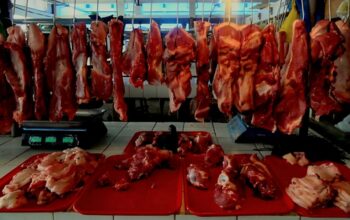
THE province of Bohol thru its distribution utilities (DUs) are procuring and consuming power generated from the coal-fired despite the fact that it is against the putting up of coal plant here.
Bohol Light Company, Inc. (BLCI) is sourcing its six megawatts power supply from coal generated plants of KSPC. Bohol Electric Cooperative I and II are using coal produced by SMEC and GN Power, respectively, according to the public utilities report by Provincial Board Member Aldner Damalerio.
“This is the main reason why the electricity in Bohol is costly because all (except Green Core) power suppliers of our DUs are using coal as their energy source,” the committee report delivered by Damalerio showed
Earlier, the Sangguiang Panlalawigan passed Provincial Ordinance opposing the setting up of a coal plant to augment the power insufficiency here but it did not comment on the use of gasoline and other petroleum products. Both coal and petroleum are products from fossils.
Bohol, however, is not alone in using coal energy but most of the country. “For September 2022 alone, the generation mix of Boheco I is 87.57 coming from coal-generated power plants.”
The committee report signed by Damalerio as chair and BM Dr. Romulo Cepedoza and BM Atty. Tomas D. Abapo, Jr, vice-chair and member, respectively, dealt with Abapo’s concern over the rising cost of power in Bohol.
Damalerio compared the power rates on the following: Southern Leyte @ P19.01/kwh in July 2022; Zambales, P20.48/kwh in August 2022; Biliran, P20.96 in September, 2022; Southern Leyte, P19.76/kwh in October; CBECO in Cebu, P19.81/kwh in November 2022; and VECO, P18.54/kwh in December 2022.
Damalerio said that the so-called “generation charge” got the lion share in electric billings.
Damalerio cited that Boheco I’s generation charge is 67% during December 2022 as an example of big chunk in power bills. While transmission charge is only 3%; distribution supply metering charge (DSM), 10%; and reinvestment fund for sustainable capital (RFSC) expenditure, 5%.
“Both DSM and RFSC are charges paid to the DUs as regulated and approved by the ERC and National Electrification Administration.”
The charges imposed on the consumers are mainly based on the Electric Power Industry Reform Act of 2001 (EPIRA), or the Republic Act No. 9136. This made the four sectors — generation, transmission, distribution and supply — of the industry privatized.“Generation charge is defined as “pass through” cost. This is the cost from generation companies/power suppliers. This is collected by the DUs and remitted to the power suppliers.”
Also, the cause of high cost of electricity is the ongoing war in Ukraine illegally invaded by Russia said to be the leading supplier in Europe. Countries, like Indonesia, which took a stand in reserving its coal for their use, “scrambled in purchasing coal.” This paved the way to coal supply shortage, the report said.
Cost of transportation for raw coal supply from other countries added to the generation cost, the report said. (rvo)



